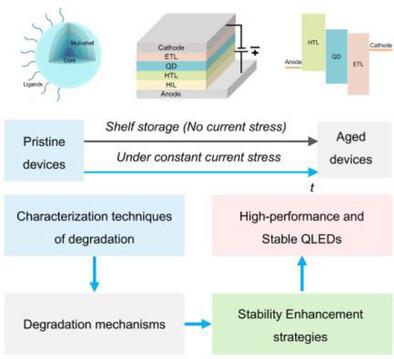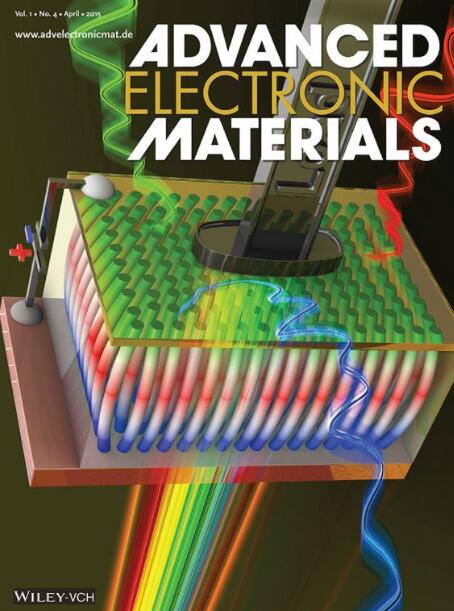量子点发光二极管的最新进展:提高器件稳定性和可靠性的退化机制和策略
IF 5.3
2区 材料科学
Q2 MATERIALS SCIENCE, MULTIDISCIPLINARY
引用次数: 0
摘要
采用量子点(QDs)作为发射层的量子点发光二极管(qled)已成为下一代溶液处理印刷显示器的关键器件。然而,由于操作不稳定和不可预测的货架储存行为,它们遇到了重大的商业化挑战。这种不稳定性表现为复杂的亮度演变,其特征是在电应力下初始增加(正老化),随后是不可逆的衰减(内在退化)。此外,货架储存期间不受控制的效率提高导致不同批次之间显著的性能不一致。全面了解qled在运行和存储期间的各种机制对于同时提高稳定性和可靠性至关重要。因此,本文系统地总结了qled操作诱导的正老化和内在退化机制以及货架储存诱导的正老化机制的最新进展。它还强调了前沿表征技术,如原位电/光学光谱,电激发瞬态吸收光谱和阻抗光谱,如何提供超越传统方法能力的降解过程的关键见解。在此基础上,从材料工程到器件结构优化,总结了相应的减缓老化和提高使用寿命的策略,为制造具有长使用寿命的货架稳定qled提供了指导。本文章由计算机程序翻译,如有差异,请以英文原文为准。

Recent Progress in Quantum Dot Light-Emitting Diodes: Degradation Mechanisms and Strategies for Improving Device Stability and Reliability
Quantum dot light-emitting diodes (QLEDs) employing quantum dots (QDs) as the emissive layer have emerged as pivotal devices for next-generation solution-processed printed displays. However, they encounter significant commercialization challenges due to operational instability and unpredictable shelf-storage behavior. This instability manifests as a complex luminance evolution, characterized by an initial increase (positive aging) followed by irreversible decay (intrinsic degradation) under electrical stress. Furthermore, uncontrolled efficiency enhancement during shelf storage leads to notable performance inconsistencies across different batches. A comprehensive understanding of the various mechanisms in QLEDs during operation and storage is essential for simultaneously improving stability and reliability. Consequently, this review systematically summarizes recent advances in the mechanisms underlying operation-induced positive aging and intrinsic degradation, and shelf-storage-induced positive aging of QLEDs. It is also highlighted how cutting-edge characterization techniques, such as in situ electrical/optical spectroscopy, electrically excited transient absorption spectroscopy, and impedance spectroscopy, provide critical insights into degradation processes beyond the capabilities of conventional methods. Furthermore, corresponding strategies are concluded to mitigate aging and enhance operational lifetime, ranging from material engineering to device architecture optimization, which provide a guideline for fabricating shelf-stable QLEDs with long operational lifetimes.
求助全文
通过发布文献求助,成功后即可免费获取论文全文。
去求助
来源期刊

Advanced Electronic Materials
NANOSCIENCE & NANOTECHNOLOGYMATERIALS SCIE-MATERIALS SCIENCE, MULTIDISCIPLINARY
CiteScore
11.00
自引率
3.20%
发文量
433
期刊介绍:
Advanced Electronic Materials is an interdisciplinary forum for peer-reviewed, high-quality, high-impact research in the fields of materials science, physics, and engineering of electronic and magnetic materials. It includes research on physics and physical properties of electronic and magnetic materials, spintronics, electronics, device physics and engineering, micro- and nano-electromechanical systems, and organic electronics, in addition to fundamental research.
 求助内容:
求助内容: 应助结果提醒方式:
应助结果提醒方式:


